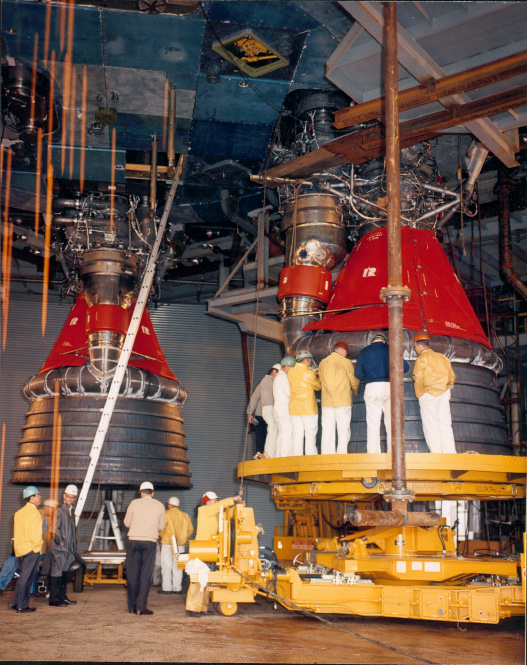
 Copyright © Michael Richmond.
This work is licensed under a Creative Commons License.
Copyright © Michael Richmond.
This work is licensed under a Creative Commons License.
Compare these two rocket engines. First, the mighty F1,

five of which powered the giant Saturn 5 moon rocket,
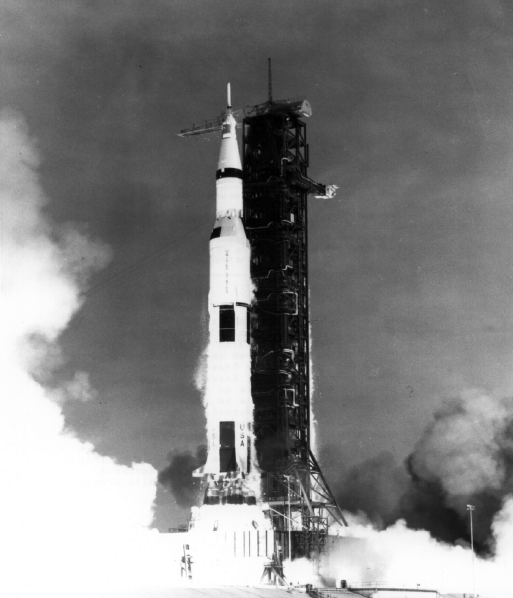
On the other hand, the Deep Space 1 ion engine is just a small portion of this tiny spacecraft:
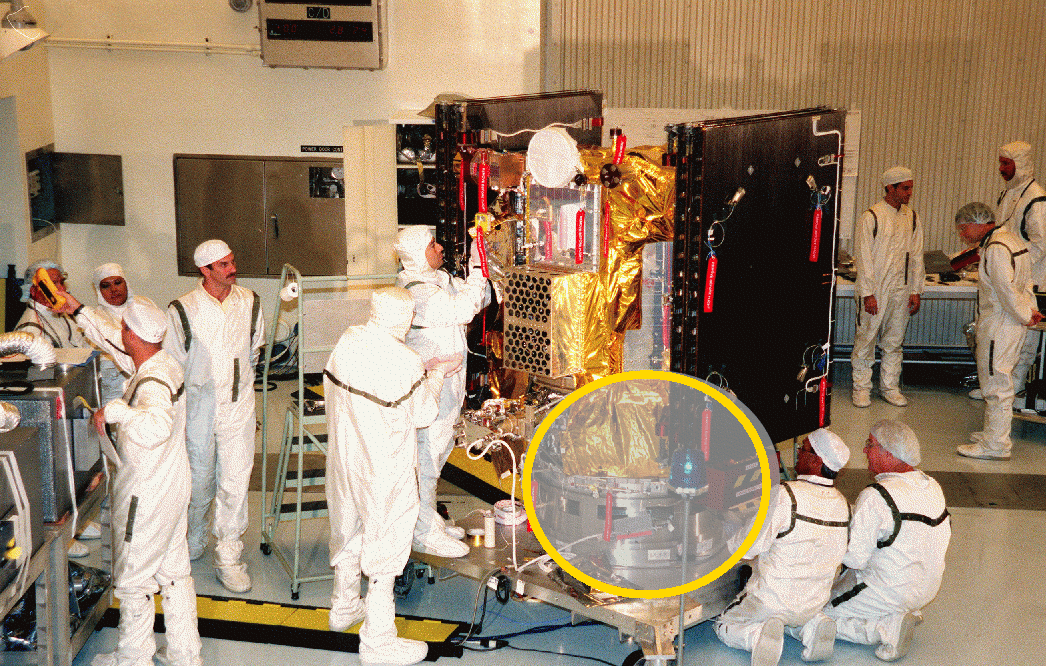
Which do you think gave its payload a larger final speed?
Well? Guess!
The answer is .... the tiny ion engine, which accelerated its payload to 7,800 m/s. The F1 could only reach a speed of 7,500 m/s. How is that possible? You need to know how rockets work to understand ....
So far, in all the examples of momentum you have seen, the mass has been constant. That simplifies the calculations ....

But what if the mass of an object changes as it moves? Then the derivative of momentum becomes more complicated ...

But we'll have to deal with this complication if we want to understand how rockets work.
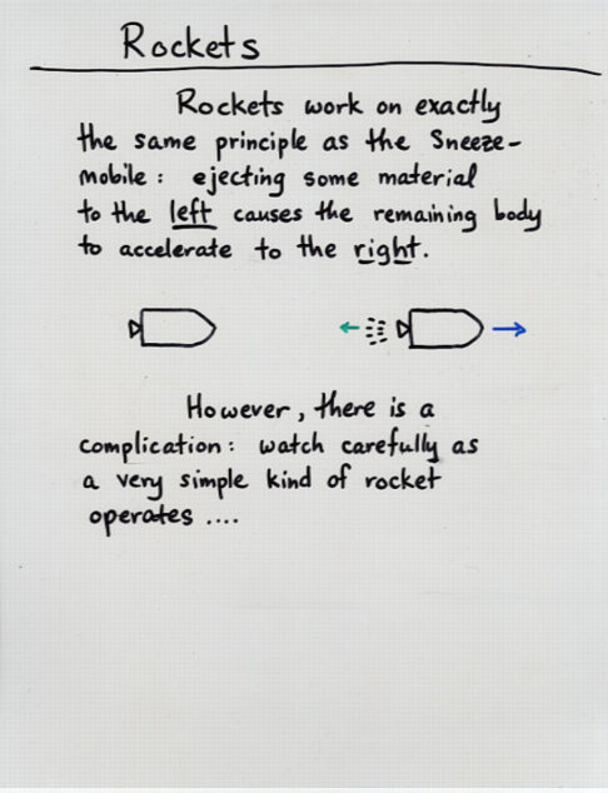
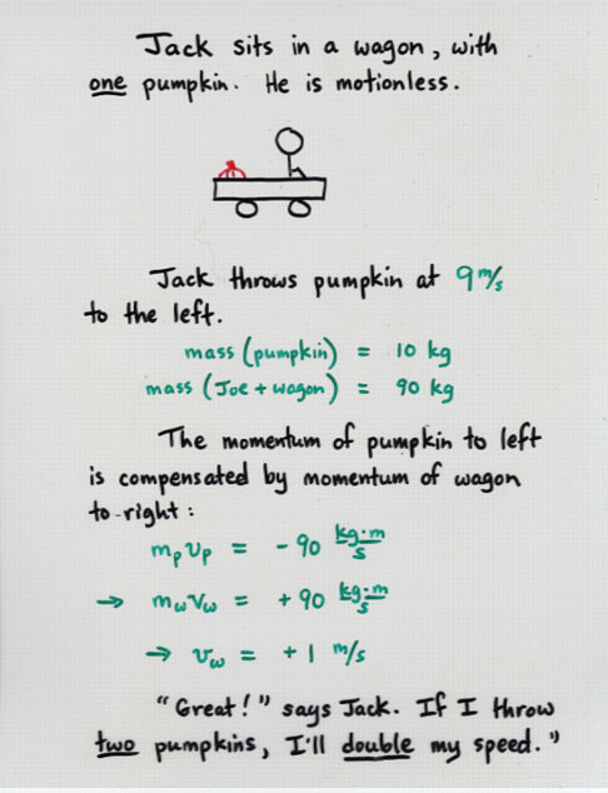
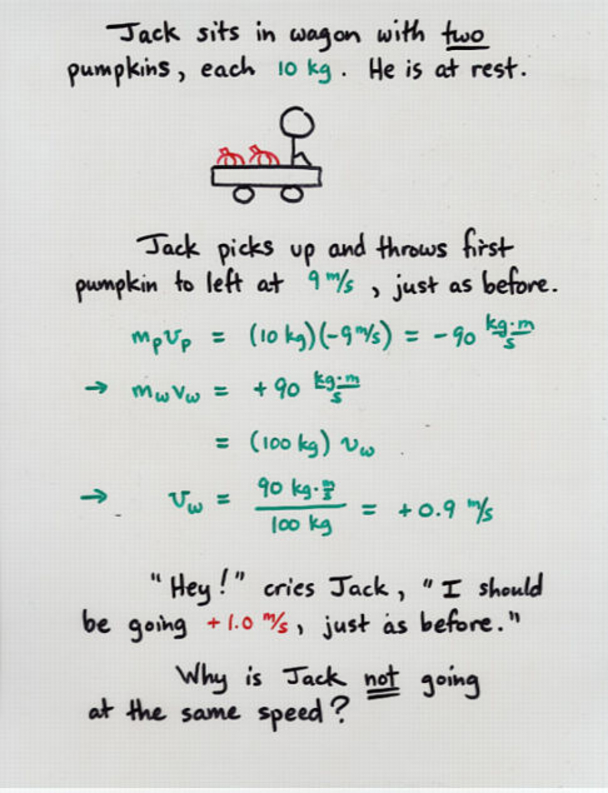
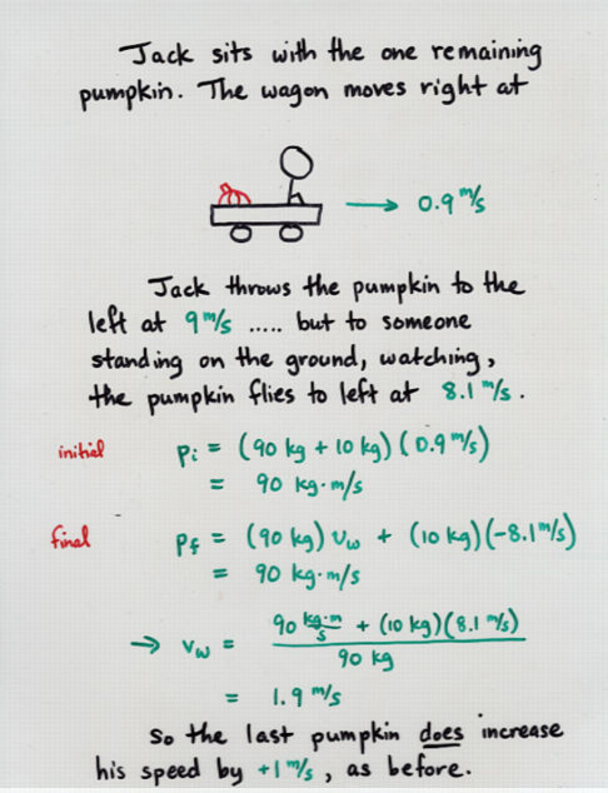
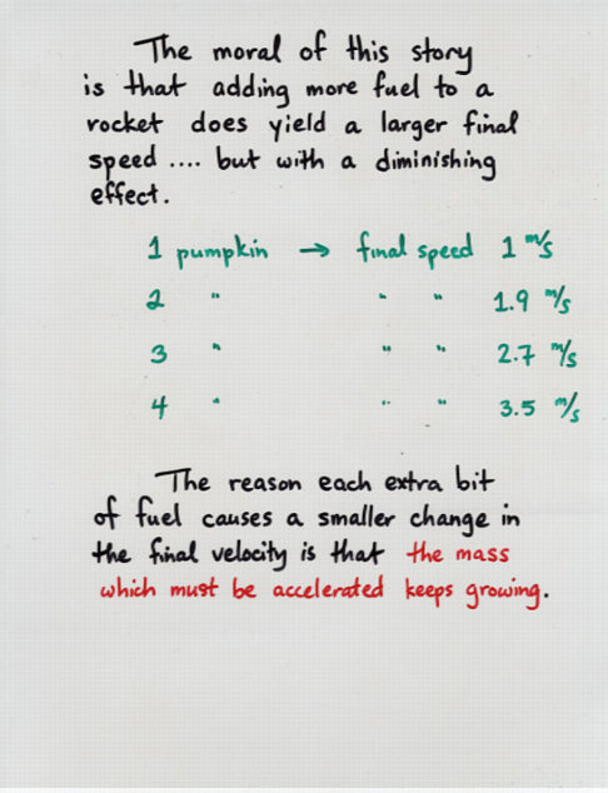
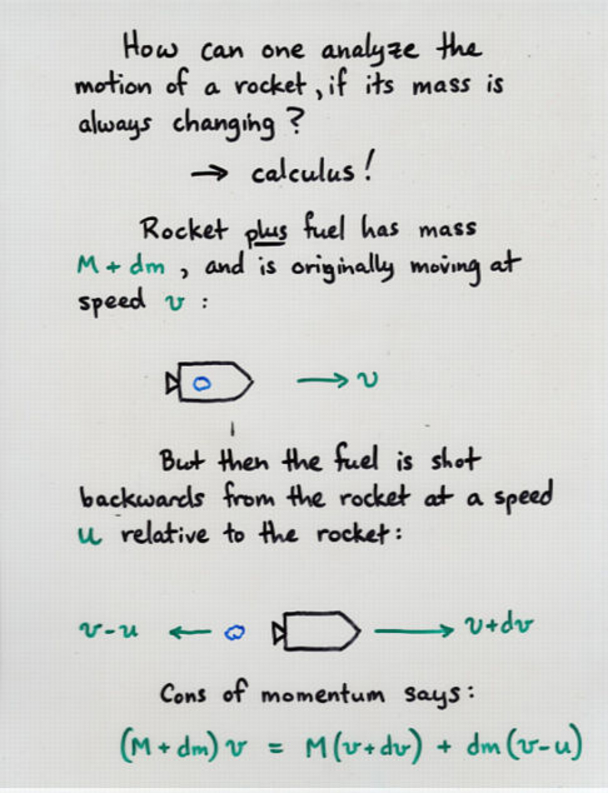
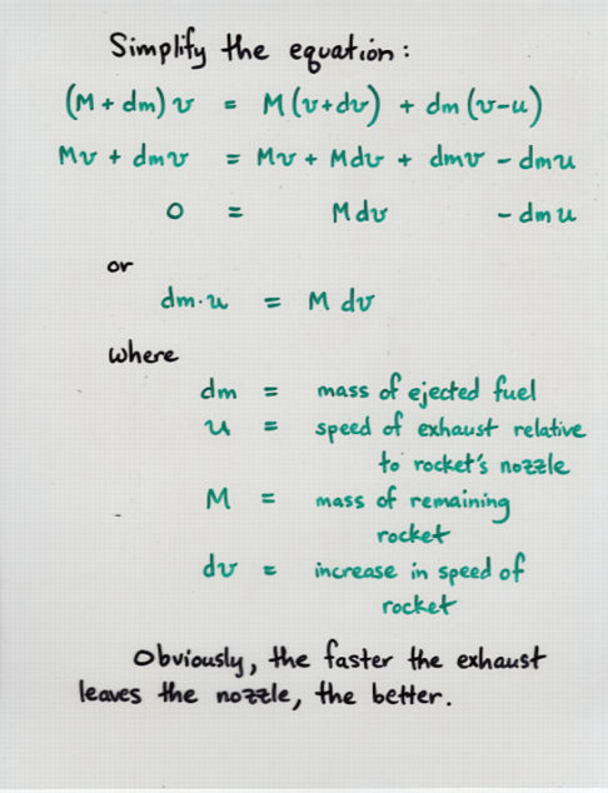
Now, the two rocket engines took two different approaches to pushing their payloads forward.
Saturn F1 DS1 ion engine
---------------------------------------------------------
maximize rate of fuel speed of exhaust
consumption
fuel usage 2,450 kg/s 0.000 002 kg/s
(dM/dt)
exhaust speed 2,600 m/s 43,000 m/s
(u)
thrust 6,400,000 N 0.09 N
duration of
thrust 3 minutes 440 days
----------------------------------------------------------
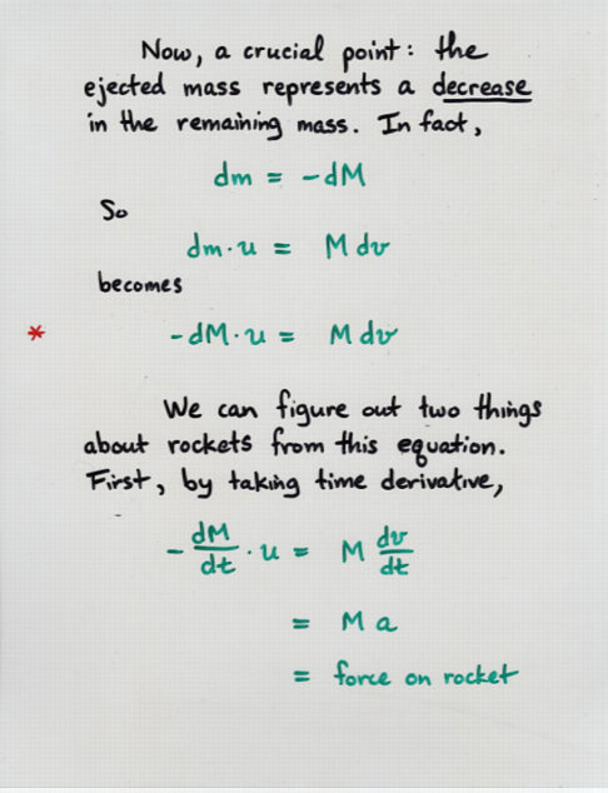
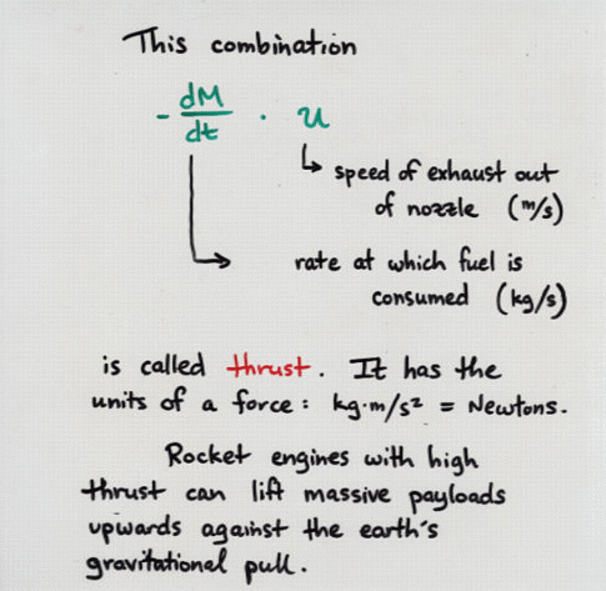
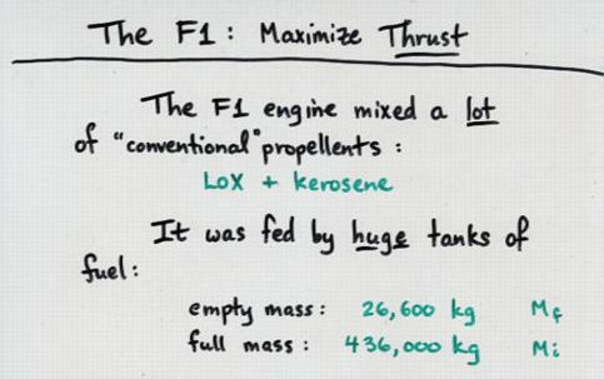

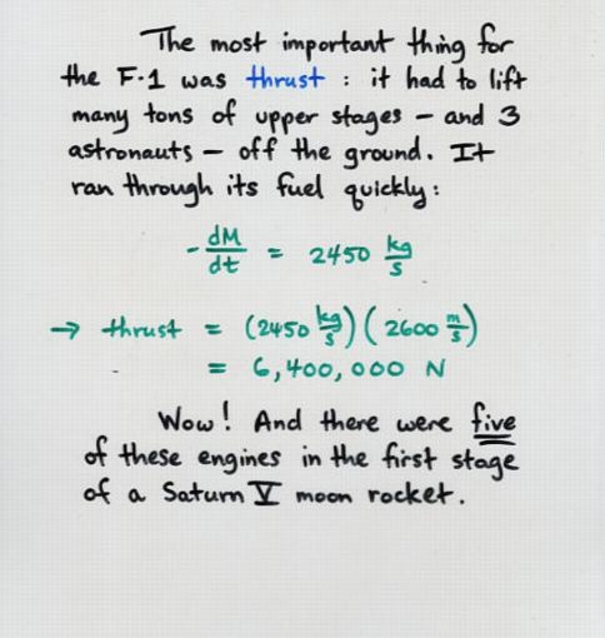
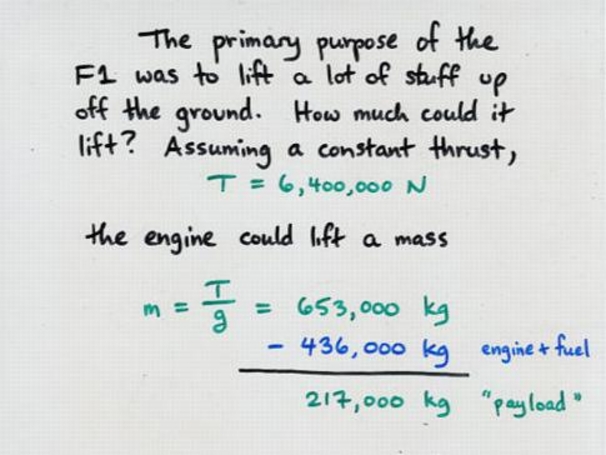
What about the Deep Space 1 ion engine?
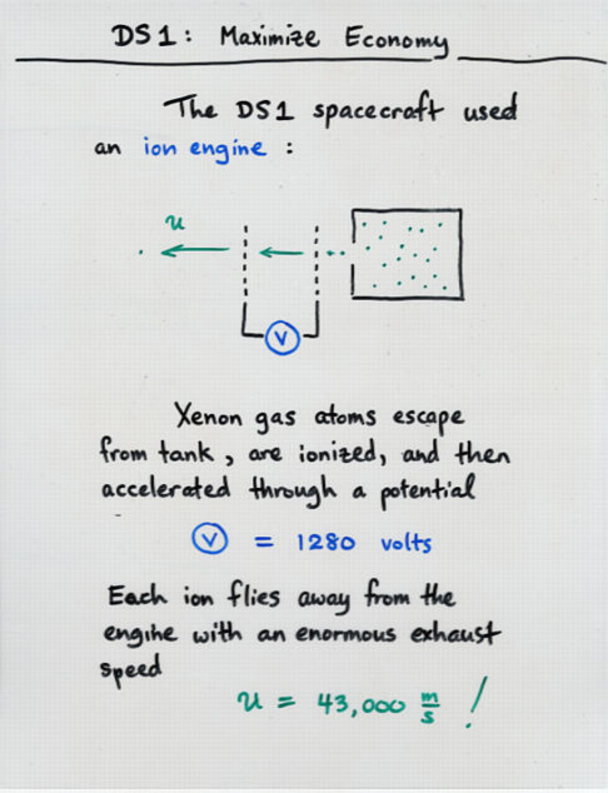

The ion engine is a weakling: it can't even lift itself off the ground. NASA had to put it inside another vehicle with conventional chemical rockets (and large thrust) to get it off the Earth and into space.

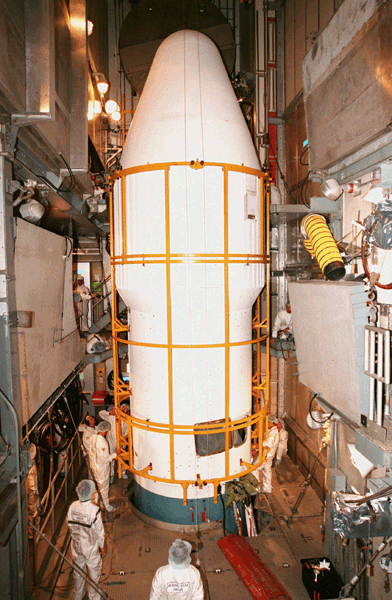
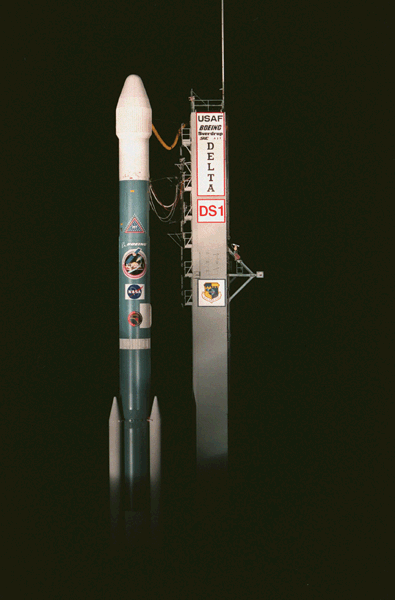
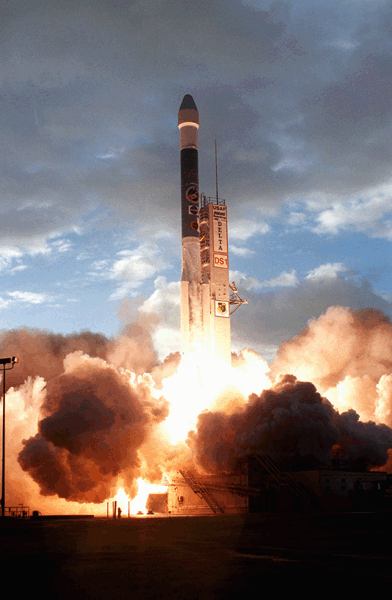
So, as far as thrust goes, the Saturn F1 engine beats the DS1 engine hands down. It isn't even close.
However, raw power isn't the only important property of a rocket engine ....
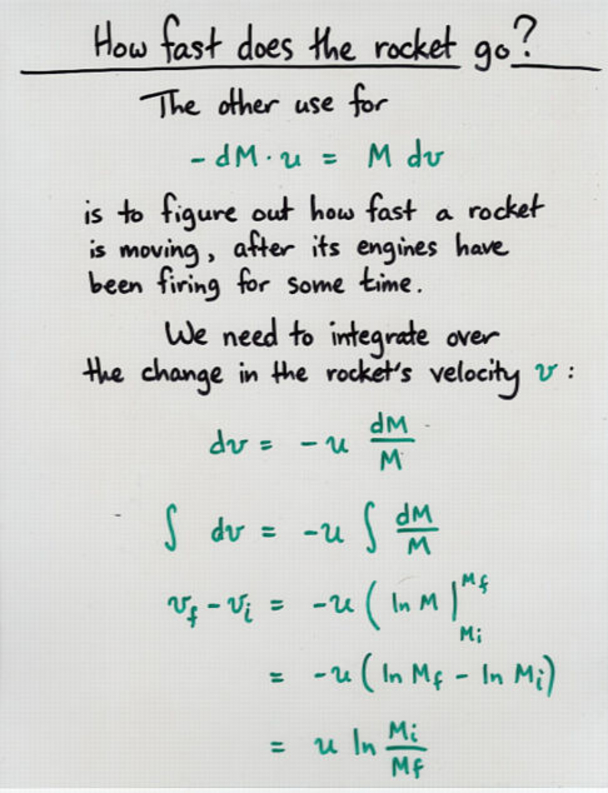
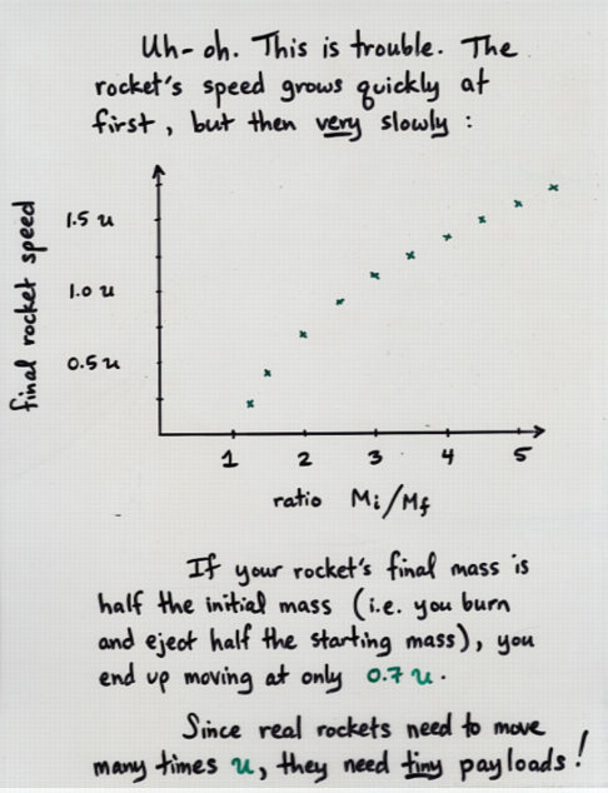
If we judge the two rockets by this criterion, which one will win?
Saturn F1 engine: full of fuel Mi = 436,000 kg
empty Mf = 26,600 kg
exhaust speed u = 2,600 m/s
Q: What is the final speed of the F1 engine?
DS1 ion engine: full of fuel Mi = 489.5 kg
empty Mf = 408 kg
exhaust speed u = 43,000 m/s
Q: What is the final speed of the DS1 ion engine?
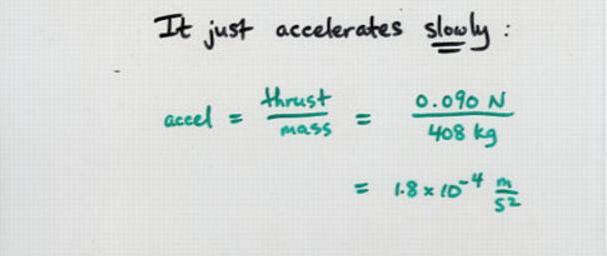
For more details, you can read these sets of lecture notes:
 Copyright © Michael Richmond.
This work is licensed under a Creative Commons License.
Copyright © Michael Richmond.
This work is licensed under a Creative Commons License.